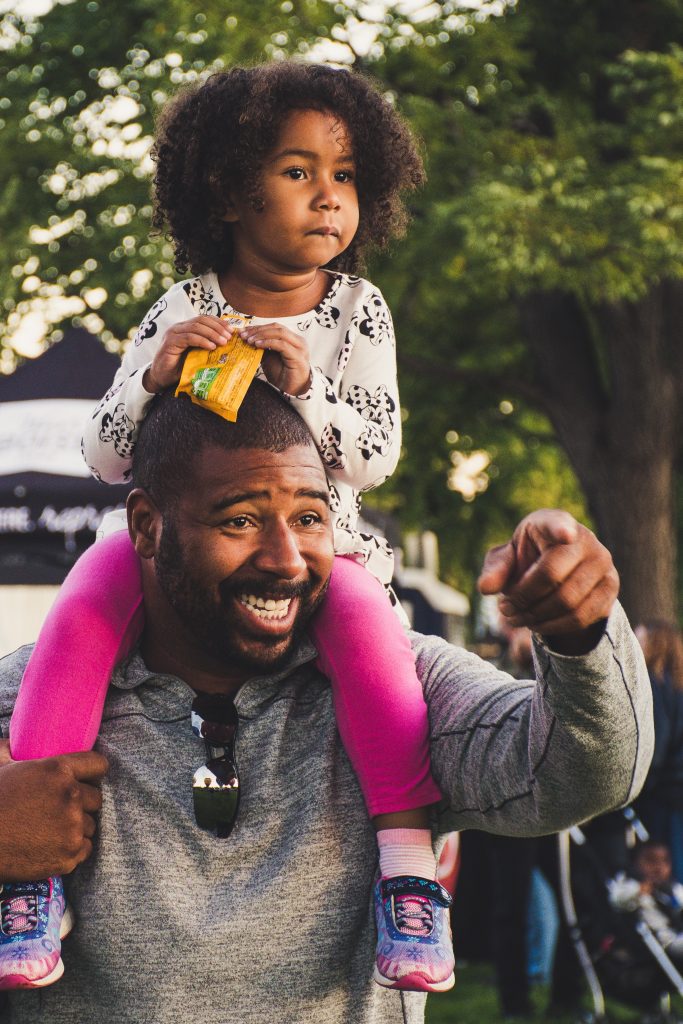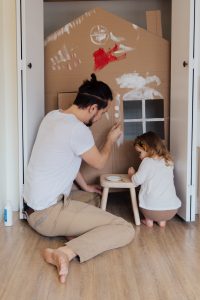As babies grow and develop, you might realize that they are afraid of new people and start to cry when an unfamiliar person holds them. This is actually quite normal and is referred to as stranger anxiety. The baby now knows the difference between their parents or primary caregivers and strangers.
The article walks you through every aspect of the subject, from understanding stranger anxiety in babies, its reasons, signs, and management techniques.
Read on.
What is stranger anxiety in babies and toddlers?
Stranger anxiety refers to the child’s distress when meeting a new person. This anxiety is a normal developmental milestone and is related to the child’s growing grasp in differentiating the familiar and unfamiliar.
For example, if a baby has not seen his/her grandma and grandpa for a long time, he or she might feel distressed when meeting them as they are unfamiliar and seem to be strangers. The baby might show signs of being distressed when the unfamiliar person approaches.
Stranger anxiety usually begins when the child is around 8 to 9 months and should resolve by the time he/she is around 2 years old.
However, parents do need to recognize when this is happening in order to be able to help their child to overcome their distress. Do remember that this is a normal stage in your child’s development and try not to worry too much if they cry or hide when a stranger approaches.
How is stranger anxiety different from separation anxiety?
Stranger anxiety occurs when a baby is distressed due to meeting new people or being left with strangers. Separation anxiety occurs when a baby is distressed due to being left alone or being separated from their primary caregivers or their parents.
As with stranger anxiety, separation anxiety is also a normal developmental stage. It typically starts when babies are around 8 months old and peaks when they are 10 to 18 months old and may continue until they are about 24 months old.
Children of this age would have developed a sense of attachment to their parents and may cry when they are separated from their parents. This is because their parents represent safety and their presence reassures the child that they are safe.
Separation anxiety starts to resolve when the child learns that their parents will return. Separation anxiety is usually not a cause for concern. However, do let your pediatrician know if your child is older and seems to be experiencing separation anxiety that interferes with his/her daily activities and normal development.
What causes stranger anxiety in babies and toddlers?
As babies grow, they start to be more aware of the world around them. Stranger anxiety begins when the child develops healthy attachments to familiar people. They realize that their relationship with their parents and primary caregivers are not the same as their relationships with strangers. As they realize this, babies naturally prefer someone they know and start to feel distressed when faced with an unfamiliar person.
Signs of stranger anxiety
Different babies will have different ways of expressing their fears and worries. One of the most common ways a baby expresses this is by crying or clinging tightly to mom or dad. They may also try to hide their face to avoid having to look at the stranger.
He or she might ‘freeze’ in your arms when there is an unknown person around. They may look frightened, keep very quiet and very still because they are uncomfortable.
Toddlers might try to hide behind you or even verbally express that they want you to carry them or to stay with them.
Regardless of how they express themselves, it is important to recognize the signs of stranger anxiety in your child in order for you to be able to help their distress.
How to manage stranger anxiety in babies?
A baby’s stranger anxiety might become quite stressful for both parent and child, especially if it seems to be getting worse. But fear not, there are a number of ways that can help you and your baby navigate through this period.
Check out the following tips and techniques that most parent swear by:
1. Acknowledge that every child is different
Different babies will warm up to new people at different paces. Recognize that your child may just need a little bit more time to warm up to a new person. This will help you heaps in terms of being patient and giving them all the support they need to steer through all their emotions.
2. Give your baby time to warm-up
When you introduce someone new to your child, give them time to warm up to the stranger. Stay with your child as you do the introduction to reassure him or her that it is ok.
Introduce your child to the new person at home as this is most likely where your child feels the most secure. You can also ask the new person to give your baby some time before they carry your baby.
If your child is still upset, you can move away from the stranger and try to do the introduction again later.
For example, if you are to leave your baby with a new babysitter, a good way to let your baby warm up to the new person is to have the stranger over a day or two before. Your baby will feel more comfortable getting to know the new person when you are around.
This will result in a more positive introduction and reduce the anxiety that your baby might feel.
3. Introduce your baby to new people from a young age.
Allow your child to meet new people frequently from a young age. As you keep doing so, your child will start to realize that they are safe. Their fears will start to reduce when they get used to meeting new people.
4. Support your baby and allow them to work through their emotions
One of the best ways to reduce stranger anxiety in the long term is to allow your child to work through their emotions. Ignoring your child’s distress might result in increased anxiety. If your child is not ready to be held by a stranger, do not pressure your child to do. This might cause them to be even more anxious the next time they meet a new person.

5. Be Friendly
Your baby picks up social cues from you. For example, they might be unsettled because they feel your stress and worries. Similarly, if you are calm and friendly to a new person, your baby will see that and follow your cues.
6. Stay Positive
Keep positive, and use a comforting tone when you are introducing your baby to a new person. Hold them to reassure them and keep them calm. As you stay positive, your child will start to feel more positive and comfortable with the situation.
7. Manage the expectations of others
Sometimes, it is good to let the new person know that your baby needs time to warm up, as well as suggest the best way they can interact with your baby. Recommend that they approach your baby calmly, and speak in a soft tone to help your baby relax. By doing so, you will be able to create the best positive experience for both your baby and the stranger.
8. Build independence for children above 2
While stranger anxiety will generally reduce around 2 years old, it is not unusual for older kids to feel nervous of strangers too. You can help your older child to deal with their worries by building their independence. In doing so, your child will start to feel more confident around strangers.
You can build your child’s confidence by allowing them to do things for themselves. Give them opportunities for new experiences and continue to introduce them to new people frequently. Additionally, giving them simple responsibilities to carry our will also increase independence and confidence.

9. Don’t give up
It may take your baby some time before they get used to meeting strangers. Don’t give up on introducing your child to new people. Their stranger anxiety will start to reduce when they know that they are safe.
Conclusion
Even though stranger anxiety is a normal development milestone that will resolve on its own, you might still find your child’s fear quite worrisome. The strategies above will help you to manage your child’s anxiety and help you to stay calm as well. Don’t give up as this phase will pass as your child matures.

